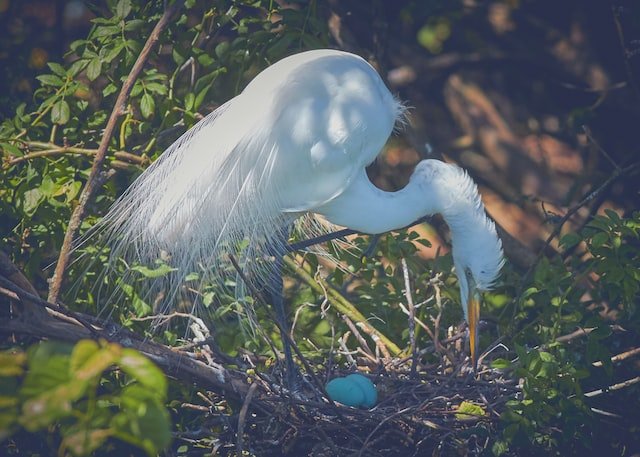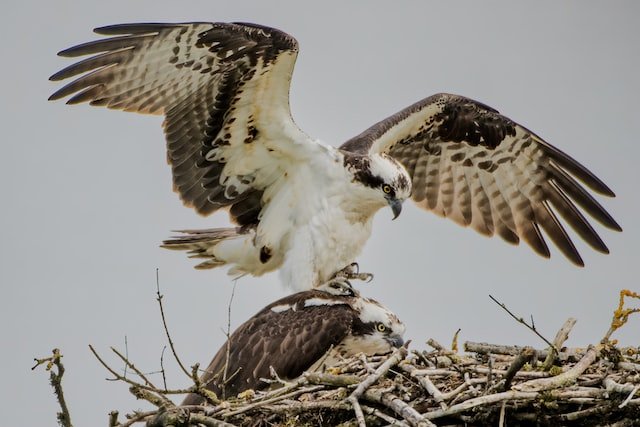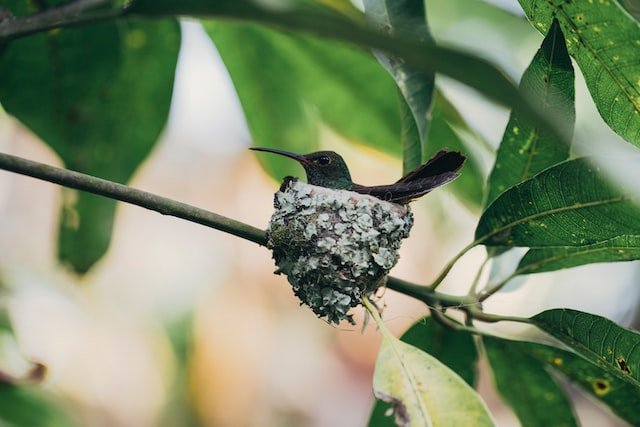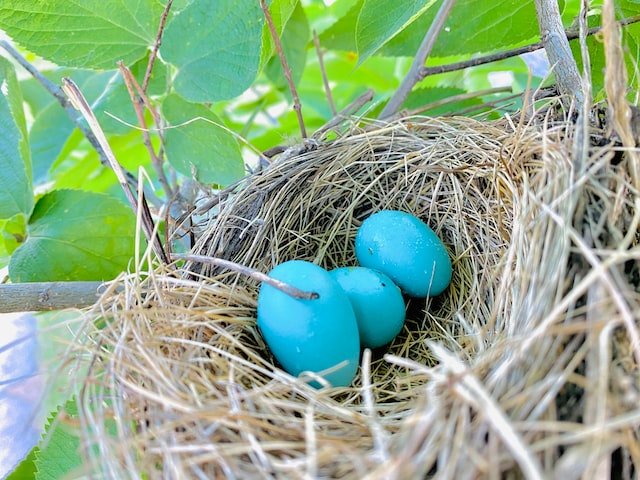All about Birds
Do Birds Lay Eggs All Year? (THIS WILL SURPRISE YOU!)
What month do birds lay eggs?
Birds typically lay eggs during the spring months, which in the northern hemisphere is between March and June, and in the southern hemisphere is between September and December.
What Month Do Birds Lay Eggs?
Contrary to popular belief, birds do not lay eggs all year round. In fact, most bird species have a specific breeding season during which they lay eggs.
This breeding season is typically triggered by environmental factors such as temperature, daylight hours, and food availability.
| Bird Species | Typical Egg-Laying Months |
|---|---|
| American Robin | April – July |
| Bald Eagle | February – April |
| Barn Swallow | May – July |
| Blue Jay | March – July |
| Canada Goose | April – June |
| Chickadee | March – June |
| Great Horned Owl | January – March |
| House Sparrow | March – August |
| Mallard Duck | February – June |
| Northern Cardinal | March – August |
| Peregrine Falcon | March – June |
| Red-tailed Hawk | March – June |
| Wood Duck | March – May |
Which Month Do Birds Lay Eggs The Most In A Year?
The specific month during which birds lay the most eggs varies depending on the species and geographical location.
However, in general, the majority of bird species tend to lay eggs during the spring months of March, April, and May.
This is because the arrival of spring signals the onset of warmer weather and longer days, which provides ideal conditions for egg-laying and chick-rearing.
Birds Lay Eggs At Different Timings During Spring
Within the spring season, different bird species have different timing for laying their eggs. Some birds are “early-nesters,” which means they start breeding and nesting as soon as spring arrives.
These birds typically lay their eggs in March or early April. Examples of early-nesting birds include song thrushes, robins, and great tits.
On the other hand, some bird species are “late-nesters” and tend to lay their eggs towards the end of spring.
Late-nesting birds typically start breeding and nesting in May or June. Examples of late-nesting birds include house martins, swifts, and goldfinches.
Attracting Early Nesting Birds
If you want to attract early nesting birds to your garden, it’s important to provide them with a suitable habitat.
Early nesting birds include species such as Blue Jays, Cardinals, and Chickadees. These birds prefer dense foliage for shelter and a consistent supply of food, such as seeds and insects.
To create an ideal habitat for early nesting birds, consider planting trees and shrubs that provide dense foliage and can act as nesting sites.
You can also put up birdhouses and nest boxes to provide additional nesting opportunities. Make sure to keep bird feeders filled with a variety of seeds and provide a consistent source of water, such as a bird bath or fountain.
Attracting Late Nesting Birds
Late nesting birds, such as the American Goldfinch and House Wren, typically start nesting in June or July.
These birds prefer open spaces with plenty of sun and a source of water. To attract late nesting birds, consider planting flowering plants and shrubs that provide a source of food and act as nesting sites.
You can also provide nesting materials, such as twigs and grass, to help birds build their nests. To attract House Wrens, consider putting up a small birdhouse in a secluded area of your garden. Make sure to keep bird feeders filled with thistle seeds, which are a favorite food of the American Goldfinch.
How Birds Know When To Lay Eggs
Birds have a remarkable ability to detect subtle changes in their environment, including the onset of the breeding season.
Several factors can influence when birds lay eggs, including their fitness level, day length, and latitude. Let’s take a closer look at each of these factors.
1. Fitness
One of the primary factors that influence a bird’s egg-laying habits is their overall fitness level. This includes their physical condition, access to food and water, and other environmental factors.
Birds that are healthy and well-fed are more likely to lay eggs earlier in the breeding season compared to birds that are struggling to survive. This is because birds need to be in good physical condition to produce and care for their eggs and young.
2. Day Length
Another key factor that influences when birds lay eggs is the length of the day. Many bird species have an internal biological clock that is sensitive to changes in day length.
As the days begin to get longer in the spring, this signals to the bird’s body that it’s time to start breeding. This triggers hormonal changes that result in the production of eggs.
3. Latitude
The timing of egg-laying can also vary depending on the bird’s geographical location. Birds that live closer to the equator tend to breed and lay eggs year-round, while birds that live in more temperate regions have a specific breeding season.
In general, the farther away from the equator a bird species is, the more seasonal their breeding patterns become.
This is because the amount of daylight varies more dramatically with latitude, which can trigger changes in the bird’s breeding behavior.
Bird Nesting Stages & Behavior
Bird nesting can be broken down into six stages, each with their own unique behaviors and requirements. These stages include:
Stage 1: Courtship & Pairing
Before birds can lay eggs, they must first find a mate. During the courtship stage, birds engage in a variety of behaviors, including singing, dancing, and offering gifts of food. Once a pair has formed, they will begin to build a nest together.
Stage 2: Nest Building
Nest building is a crucial stage in the breeding process. Different bird species build different types of nests, ranging from simple scrapes on the ground to elaborate structures made of twigs, grass, and other materials.
The location of the nest can also vary depending on the species, with some birds nesting in trees, while others prefer to nest on the ground.
Stage 3: Mating
Once the nest is complete, the birds will mate. During this stage, the female will lay her eggs, typically one at a time, over the course of several days. The male may assist with incubation, depending on the species.
Stage 4: Incubation
After the eggs have been laid, the birds will begin the process of incubation. This involves keeping the eggs warm and protecting them from predators.
The length of the incubation period can vary depending on the species, but it typically lasts between 10 and 14 days.
Stage 5: Hatching & Nestlings
Once the eggs have hatched, the birds will care for their young, known as nestlings. This involves feeding them, keeping them warm, and protecting them from predators.
The length of time that nestlings remain in the nest can vary depending on the species, but it typically lasts between 2 and 3 weeks.
Stage 6: Juvenile Fledglings
Once the nestlings have grown enough to leave the nest, they will become juvenile fledglings. During this stage, the parents will continue to care for their young, teaching them how to find food and avoid predators.
Depending on the species, juvenile fledglings may remain with their parents for several weeks or even months.
FAQs About What Month Do Birds Lay Eggs
As fascinating as birds and their egg-laying processes can be, it’s common for people to have questions.
Here are some frequently asked questions and their answers:
Do all birds lay eggs every month?
No, most birds do not lay eggs every month. While some bird species can lay eggs year-round, most birds will only lay eggs during the spring and summer months, when daylight hours are longer and temperatures are warmer.
What birds lay eggs in winter?
Some birds, such as penguins and some seabirds, lay their eggs during the winter months. These birds are adapted to living in cold, harsh environments and have unique breeding behaviors and adaptations to survive in such conditions.
How long are birds pregnant?
Birds do not have a pregnancy period like mammals do. Instead, once a female bird has laid her eggs, they go through an incubation period before hatching.
The length of this incubation period varies depending on the species, but typically lasts between 10 and 14 days.
What birds lay eggs every day?
There are some bird species, such as chickens, quails, and some ducks, that are capable of laying an egg every day.
These birds are typically domesticated and have been selectively bred for their egg-laying abilities.
Do birds lay eggs at night or day?
Most birds lay their eggs during the day, but some species, such as nightjars, will lay their eggs at night.
It’s also worth noting that many birds will only lay their eggs at specific times of the day, such as early morning or late afternoon.
Can a bird lay eggs without mating?
Some bird species, such as chickens, are able to lay eggs without mating. These eggs are unfertilized and will not hatch into chicks.
However, most bird species require mating in order to lay fertilized eggs that will develop into offspring.
Final Thoughts About What Month Do Birds Lay Eggs
Birds are fascinating creatures with unique behaviors and adaptations for survival. Understanding their egg-laying habits is an important aspect of studying their biology and ecology.
While most birds lay their eggs during the spring and summer months, there are some species that are adapted to lay their eggs during different times of the year. Additionally, factors such as day length, latitude, and fitness play a role in when birds lay their eggs.
By learning more about bird nesting stages and behaviors, we can gain a deeper appreciation for these incredible animals and the complex processes that govern their lives.
II. Types of Birds and When They Lay Eggs
A. Waterfowl
Waterfowls have an impressive range in terms of where they can be found–from as far north as the Arctic tundra, to as far south as Australia.

Not only do waterfowls come in a variety of shapes, sizes, and colors, but what’s even more fascinating is that their populations migrate annually as well! Depending on what kind of waterfowl you are looking at, they generally start laying eggs in the March-April timeframe, and depending on what type of species they are this cycle can go on until June to early July.
The primary thing driving these fluctuations is food availability – when food is ample they will lay more eggs to help grow their population.
B. Songbirds
Songbirds often lay eggs in early spring, usually around March, April, or May. The eggs vary in colors and markings depending on the type of songbird; some are plain white with light speckling while others may be a deep blue tone with dark streaks.

The female songbird then carefully incubates the eggs for about two weeks until they hatch. After hatching, baby bird fledglings take about three weeks to develop their feathers and are ready to leave their nest.
When it comes to what months do songbirds lay eggs, it’s important to understand that this event occurs during the warmer months when there is plenty of food available and easier access to nesting material such as twigs and branches.
C. Upland Game Birds
Upland Game Birds usually lay eggs between the months of April and July, with most species laying during the late April to May timeframe.

The exact timing varies from species to species and is also dependent on what part of the country you are in as well. Generally, upland game birds start nesting when temperatures reach warmer temperatures and daylight hours become longer.
Therefore, depending on what part of the country you live in, you may notice avian activity in different months across regions.
D. Raptors
Raptors, which include species like hawks, eagles, and vultures, typically lay eggs during the spring months of March through May. This is done as a survival adaptation for their young to emerge when conditions are most conducive for them to thrive.

With the warm weather comes an abundance of food sources, critical for nestlings to develop before leaving the nest and learning how to hunt on their own. Raptors generally lay between 2 or 3 eggs per clutch and strategically space them a few days apart so that they can be incubated and eventually fledge at different times.
The parenting duties of feeding and protecting their young begins soon after the hatchlings emerge from their shells.
E. Hummingbirds
Hummingbirds are beautiful, fascinating creatures that many of us enjoy watching. To lay eggs, they usually begin in what is considered the spring to summer months, between April and August in North America.

Some variations on this may occur depending on the location, but these are average dates for most hummingbird species. Hummingbirds are known for their exceptional energy and will often select a nest site near their food source so that they have plenty of energy to take care of their young.
During this time it is important to remember not to disturb hummingbird nests as this can be very stressful for the birds and may result in failed nesting attempts.
F. Shorebirds & Gulls
When talking about what months do Shorebirds & Gulls lay eggs, it’s important to keep in mind that the exact mating and nesting seasons can vary geographically.

However, generally speaking, Shorebirds and Gulls begin their courtship and mating in late winter before the beginning of spring. Once they’ve mated, they typically lay eggs in early spring—typically between March to May—followed by a hatching period from June-July. Although these birds tend to nest during these months, some species also show a slight variation in timing due to climate or other challenges, making it somewhat difficult to pinpoint when a particular bird will create its nest.
Nevertheless, for the most part, June through July is usually when you’ll see these beautiful birds flutter away with their new little ones!
III. Tips for Birders Who Want to See Nesting Birds
A. Choose the Right Location
Looking for the perfect spot to view nesting birds? It all begins with timing – what month do the eggs lay? Different species of birds will lay eggs at different times, so it’s important to research what types of birds are in your area and what ‘season’ they nest in.
You’ll also want to make sure you pick an area that has good nesting habitat – lots of trees or foliage for cover as well as natural materials like twigs and grasses.
And what about the noise level? Birds tend to choose areas with little human activity and lower levels of noise; so avoid heavily trafficked roads or loud industrial areas. Make sure you’re dressed warmly and have shoes suited for walking in nature.
B. Bring Binoculars
If you’re an avid birdwatcher, having a good set of binoculars can make all the difference.
Being able to zoom in and take a closer look at wading birds, passerines, and raptors will give you a much more immersive experience when it comes to nesting birds.
Binoculars can also help bring distant sights into focus so you don’t miss out on any exciting wildlife moments. With their portability and powerful optical design, they are the perfect companion for any serious birder looking to enjoy the full beauty of nesting birds in nature.
C. Stay Quiet & Watch from a Distance
When observing nesting birds, it’s important to remember that you are intruding on their space.
Being too loud or getting too close can disturb the birds and possibly cause them to abandon the nest; so staying quiet and watching from a distance is key. If you have binoculars, try using them to zoom in on the birds without getting too close. You should also be mindful of your movements – sudden movements may startle the birds or alert predators to their presence.
Lastly, if you see other people around, make sure they understand these guidelines as well.
D. Observe with Respect
As exciting as it can be to observe nesting birds up close, it’s important to remember that you are in their space.
Remember not to disturb the birds or the nesting area, and always clean up after yourself when you leave.
It’s also a good idea to keep a respectful distance away from the birds so as not to startle them or disrupt their natural behaviors.
Lastly, be sure to take lots of pictures so you can share your experience with friends and family – but don’t forget that these creatures deserve our respect as well!
By following these tips, you should have no problem observing what month do birds lay eggs during the breeding season.
Read Also: How Many Times A Year Do Birds Lay Eggs?
IV. Conclusion
At the end of the day, knowing what month do birds lay eggs is an essential part of being a responsible and knowledgeable birdwatcher. Whether you’re new to birding or a seasoned pro, these simple tips can help ensure that you observe nesting birds with respect and care, allowing them to breed in peace while giving you an up-close view of nature’s beauty. So get out there and enjoy all that wildlife has to offer! Happy birding!
FAQs
Q: Can I disturb nesting birds if I’m quiet?
A: No. Even if you are being as quiet as possible, it is still important to keep a distance from the birds and not disrupt them in any way.
Q: What should I wear when birdwatching?
A: When going out to observe nesting birds, make sure you dress warmly and have shoes suited for walking in nature. Also, remember to bring binoculars so that you can get a closer look at the birds without getting too close.
Q: How often do different species of birds lay eggs?
A: Different species of birds will lay eggs at different times during the year; however, many will lay eggs during the spring and summer months. It is important to research the particular species of bird you are looking to observe so that you can determine the best time to do so.

